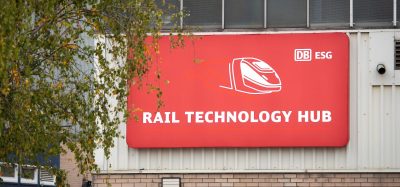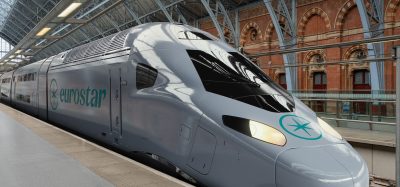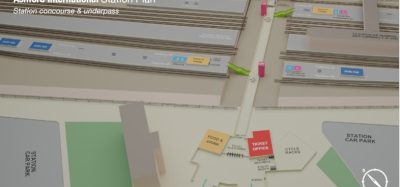The Liefkenshoek rail connection PPP
Posted: 23 January 2009 | | No comments yet
Luc Lallemand, CEO of Infrabel, speaks about the challenges, strategy and Infrabel’s investment related to the Public Private Partnership (PPP) project to extend the railway capacity towards the port of Antwerp and the construction of the Liefkenshoek rail connection.
Luc Lallemand, CEO of Infrabel, speaks about the challenges, strategy and Infrabel's investment related to the Public Private Partnership (PPP) project to extend the railway capacity towards the port of Antwerp and the construction of the Liefkenshoek rail connection.
Infrabel, the infrastructure manager of the Belgian railway network, is committed to investing strongly in the extension of the railway capacity towards the port of Antwerp. An important project in this respect is the construction of the Liefkenshoek rail connection, which will be realised with private capital by the special project company LOCORAIL NV, which was set up for this purpose. In an interview with Global Railway Review, Luc Lallemand, CEO of Infrabel, speaks about the challenges, strategy and Infrabel’s investment related to this Public Private Partnership (PPP).
The Liefkenshoek rail connection
In a first step, Infrabel expanded and renewed the rail infrastructure of Antwerp Left Bank, including the Deurganck Dock. The result of this €100 million investment is extra capacity and 153km of additional tracks (first step till 2008; second step till 2020).
However, for optimum management of the growth in freight transport, a direct rail connection between the Left Bank (Waasland Port) and the Right Bank (shunting yard Antwerp North) is necessary; this is called the Liefkenshoek rail connection.
This way, the rail traffic from the Deurganck Dock will be faster and more efficient because it will no longer need to be diverted via the busy Kennedy rail tunnel and the nearly saturated Berchem intersection, but will continue directly to Antwerp North, where the trains are put together.
Public Private Partnership (PPP)
After a selection procedure with negotiation, Infrabel has chosen LOCORAIL NV, composed of construction companies CFE NV, VINCI Concessions SA, BAM PPP Investments Belgium, as private partner for this project. The financial closing followed the signing of a DBFM (Design, Build, Finance and Maintenance) contract and the awarding of the building contract. The engineering of the Liefkenshoek rail connection will be entrusted to the construction consortium THV LOCOBOUW, which includes MBG, VINCI Construction Grands Projets, CEI-De Meyer and Wayss & Freytag. This consortium will also ensure the maintenance during the operational period.
The tender procedure for the construction and the financing of the Liefkenshoek rail connection were linked together from the start of the procedure at the end of April 2006. Infrabel has pursued separated negotiations with the three tendering consortia based on the technical specifications of the project and the offers and documentation submitted. After receiving the ‘Best and Final Offers’, separately for the technical and for the financial part, Infrabel has launched talks with the consortium which submitted the best price offer with a view to closing the contract.
Creative financing method
For the realisation of the Liefkenshoek rail connection a special project company has been set up: LOCORAIL NV. This private entity will be responsible for the design, building, financing and maintenance (DBFM). Infrabel will be entitled to use the infrastructure during 38 years on the condition that it pays an annual availability fee of around €50 million (payable quarterly). After that period, Infrabel will become the full owner of the infrastructure without any further obligations.
Thus, the financing of this project will take place via a PPP for the construction works (+/- €690 million Euros – CAPEX). The Flemish Region will provide co-financing in the amount of €107 million. The building of the rail infrastructure will be financed by Infrabel itself for an amount of approximately €75 million and is not part of the DBFM assignment. In order to safeguard the competitiveness of the port of Antwerp, and not to put rail container transport at risk, the users of the Liefkenshoek rail connection will not have to pay any user tax.
Construction of the Liefkenshoek
The railway works include the construction of a railway bed from Siding South to the existing Beveren railway tunnel, which will be adapted and renovated; the construction of an access tunnel between this Beveren railway tunnel and the tunnels to be bored; the construction of two single-track bored tunnels under the Scheldt and channel dock B1-B2; the building of a closed tunnel construction and an open access ramp on the Right Bank and the adaptation of the existing railway tunnel under the R2.
During the realisation of the Liefkenshoek rail connection (+/- 16.2km), safety is an absolute priority. For instance, electromechanical installations are provided in the tunnels (smoke, heat and water vents), and access roads and shafts to the tunnels are being built for emergency services. A fire fighting system will also be installed.
Planning of works
The consortium started the works in mid November 2008 for the construction of the Liefkenshoek rail connection. By mid 2013, the building works will have been completed. In the period 2012-2014, Infrabel will execute the works on tracks, signalling infrastructure and overhead wiring in several stages.
Infrabel will integrate the new rail infrastructure into the surroundings in a sustainable way by building a compensation area at Groot Rietveld in Kallo, three noise buffers around Kallo, Verrebroek and Zuidelijke Groenzone and noise screens.
From the spring of 2014 onwards, the rail infrastructure of the Liefkenshoek rail connection will be tested. After homologation, Infrabel will put the new Liefkenshoek rail connection at the disposal of the railway operators by mid 2014.
Railway investments for better accessibility of the Antwerp Port
The Liefkenshoek rail connection fits into Infrabel’s strategy for a gradual expansion of the capacity of the network and a progressive support of the growth of the port of Antwerp. The Liefkenshoek rail connection also fits into Infrabel’s vision for optimal intermodality between the rail network and the ports of Antwerp, Ghent and Zeebrugge.
Since its establishment on 1 January 2005, Infrabel has invested in a competitive and adapted rail infrastructure in the port of Antwerp. To that end, a common strategy was set up with the Port Authority, the Flemish Government and the Belgian Government. The port of Antwerp is of strategic importance for the development of the Belgian economy. Therefore, an expansion of the rail capacity in and around the port of Antwerp is necessary to keep up with the increase in freight transport. Infrabel wants to expand the share of rail traffic in the port of Antwerp from the current 8% to approximately 15% in 2020 to keep up with the increase in freight transport.
PPP as part of the Infrabel strategy
The realisation of the Liefkenshoek rail connection through a Public Private Partnership fits into Infrabel’s strategy, i.e. a continuing search for creative financing methods in conformity with the present market situation for the completion of large scale infrastructure projects.
Next to the Diabolo project (the northern rail connection towards Brussels Airport), the Liefkenshoek rail connection is the second successful PPP project for Infrabel. The fact that the private sector is injecting some €1 billion1 in our railway infrastructure proves the investment world’s faith in Infrabel, according to Luc Lallemand.
Reference
- +/- €290 million through PPP for the Diabolo project and +/- €690 million (CAPEX) for the Liefkenshoek rail connection project
OUT NOW: The Definitive Guide to Rail’s Digital Future
The rail industry is undergoing a digital revolution, and you need to be ready. We have released our latest market report, “Track Insight: Digitalisation.”
This is not just another report; it’s your comprehensive guide to understanding and leveraging the profound technological shifts reshaping our industry. We move beyond the buzzwords to show you the tangible realities of AI, IoT, and advanced data analytics in rail.
Discover how to:
- Optimise operations and maintenance with real-time insights.
- Enhance passenger services through seamless, high-speed connectivity.
- Leverage technologies like LEO satellites to improve safety and efficiency.
Featuring expert analysis from leaders at Nomad Digital, Lucchini RS, Bentley Systems and more, this is a must-read for any rail professional.







